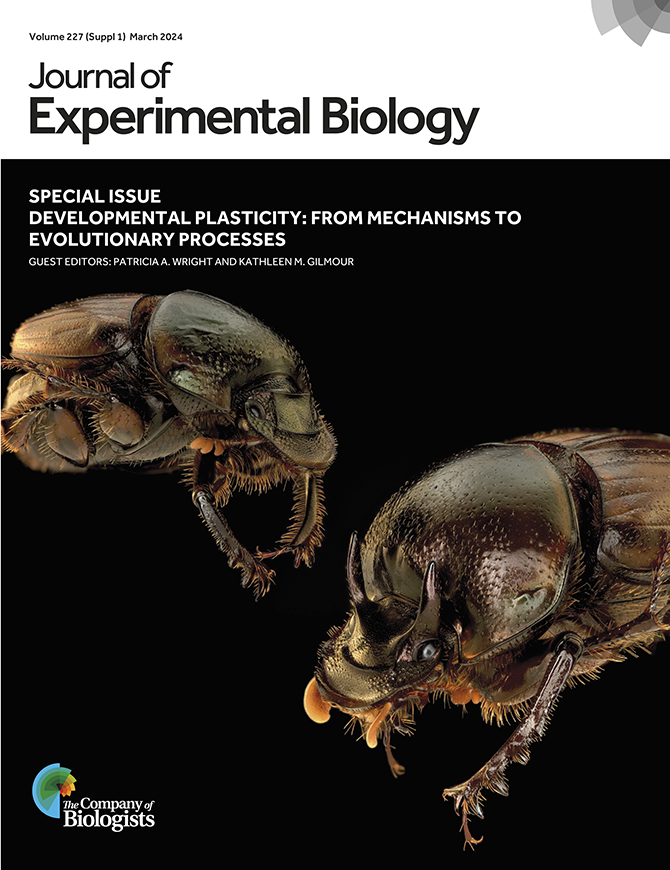Diversity drives discovery in developmental plasticity
Posted by the Node, on 15 March 2024
This is an excerpt from the Editorial by Patricia Wright and Kathleen Gilmour, editors of Journal of Experimental Biology’s Special Issue “Developmental Plasticity: From Mechanisms to Evolutionary Processes“.
Understanding the effects of the environment on animal physiology and biomechanics is at the core of Journal of Experimental Biology. Environmental factors such as temperature, food availability, sound or the presence of predators can profoundly shape how an animal grows and matures into an adult. In this Special Issue, we take a close look at developmental plasticity, which is the influence of conditions experienced during early development on an animal’s phenotype. In her classic book of 20 years ago, ‘Developmental Plasticity and Evolution’, Mary Jane West-Eberhard proposed that ‘alternative phenotypes’ that arise in organisms under different early life conditions play a critical role in moulding animal evolution and diversification (West-Eberhard, 2003). The ensuing years have seen increasing attention on how developmental plasticity may contribute to evolution. Given this, coupled with the explosion of new information on the epigenetic mechanisms underlying developmental plasticity, the growing number of submissions to JEB in this area, and the fact that an earlier special issue on ‘Phenotypic Plasticity’ (Hoppeler et al., 2006) is now 18 years old, the time seemed right for a special issue on developmental plasticity. In the current issue, we have capitalized on the diversity of animal models under study, from worms to dung beetles and lizards to mice, to assemble a strong comparative approach to the topic. We also aimed to bring together researchers considering developmental plasticity from diverse angles, from molecular and cellular biology to whole animal physiology, ecology and evolution, to more fully understand and integrate new approaches and research findings.
Developmental plasticity is defined by the rearing environment, from nutrition to social conditions, which provides critical information that developing animals use to shape the maturation process and resultant adult behaviour and physiology. Such context-dependent plasticity during development is often considered to be both widespread and adaptive, although the extent to which this is the case remains unclear (Sánchez-Tójar et al., 2020). It is also important to recognize that conditions such as resource limitations or exposure to environmental contaminants can result in damaged phenotypes that are clearly not adaptive. In this Special Issue, Metcalfe (2024) discusses a third possibility – that variation in early conditions need not always result in obvious adult changes, but may alter developmental trajectories in ways that have more nuanced consequences over longer periods of time. Other articles in this Special Issue focus on identifying critical environmental factors that serve as cues for developmental adjustments, and how these, in turn, are transduced within the developing animal. For example, information transmission may be mediated by parental behaviour (e.g. Mariette, 2024) or indirectly via provisioning of the egg. Hotter temperatures, food scarcity or stress (e.g. from predators) experienced by a parent provide anticipatory cues to developing animals that may prepare them for similar stressors in later life. Food availability or nutrition, in particular, appears to be of fundamental importance in an animal’s developmental trajectory, to the point where we may ask whether it is a ‘master’ regulator of development. Understanding the mechanisms involved in nutritional effects on development is a critically important area for future research.
Browse through the entire Special Issue.



 (No Ratings Yet)
(No Ratings Yet)